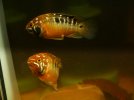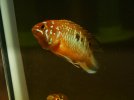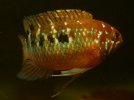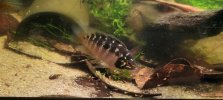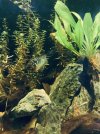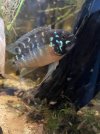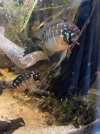Best nutritional value in frozen and live form for dwarf cichlids are crustaceans, Artemia, Mysis, Cyclops, Gammarus and worms like blackworms, potworms and the like. Tubifex are a source of parasites, so only to be feed frozen or freeze dried. Daphnia are also good, should be fed sparsely though, as well as white mosquito larvae, as both are rich in fiber but have little energetic value. And then there is the superfood: Black mosquito larvae. But those are not always easy to get, as they are from biting mosquitos. What I loved to feed for a while was Neocaridina shrimplets from my neighbour. He always had surplus and so I had lots of live food.Anything else you suggest?
In dried food insects are a good thing, especially things based on soldier fly and the like, so bug bites are a good choice, there are better ones, but those are quite high up in the premium segment. I rather just won't feed dry foods. Most importantly make sure the fish meal and grain/starch components are minimal. Gluten is fine, wheat flower is a no-go.
I'd be very cautious with the bloodworms, they have often contamination problems as they are so cheaply produced. Many people including me have lost dwarf cichlids just by feeding them bloodworms. Nobody knows what came first, the wrong labeling of bloodworms as nutritionally sound food or overproduction, marketing has placed them firmly as the most widely available and well known food. But ultimately that stuff is most often just junk.For frozen i've been feeding a lot of blood worms, a little brine shrimp
Had to look that up (we have completely different brands and I only care for ingredient lists), well, of course not their thing.and a little Emerald Entree (which they aren't crazy for)
Again, you're welcome!I have begun to transition to mostly RODI, right now my watercahnges are 75% RODI. Just step one as i continue to familiarize myself with the content you messaged me earlier (thanks again by the way!) I really want to do it right without any mistakes.

